Do you have a question about the Subaru 2008 IMPREZA and is the answer not in the manual?
Outlines the SUBARU Limited, Emission Control, and Emissions Performance warranties for vehicles sold in the USA.
Details the SUBARU Limited, Anti-Corrosion, and Emission Control warranties for vehicles sold in Canada.
Guides on reading the manual, including chapter summaries and understanding safety alerts.
Lists and identifies various marks and their corresponding names that may be seen on the vehicle.
Emphasizes seatbelt use and provides precautions for SRS airbag deployment and occupant positioning.
Details critical safety measures for children, including restraint systems, rear seat placement, and airbag risks.
Warns about carbon monoxide dangers and advises against driving under the influence of alcohol or drugs.
Covers risks of drowsy driving, cautions against vehicle modification, cell phone use, and unrestrained pets.
Instructs on tire pressure checks and alerts about Proposition 65 chemicals in vehicle components.
Provides an illustrated index identifying key exterior parts with corresponding page references.
Illustrates and identifies components in the passenger compartment and instrument panel with page references.
Illustrates and identifies light control and wiper control levers and switches with their functions.
Identifies gauges and indicators in the combination meter for U.S.-spec. WRX STI models.
Lists and describes various warning and indicator lights on the instrument panel, explaining their function and meaning.
Explains how a SUBARU dealer can adjust vehicle function settings to personalize the owner's experience.
Details front seat adjustments (fore/aft, reclining, height) and features like head restraints and seat heaters.
Explains seatbelt usage, safety tips, locking retractors (ELR/A/ELR), and warning lights/chimes.
Introduces SRS airbags (frontal, side, curtain) and their role as supplements to seatbelts, with critical safety warnings.
Provides guidance on choosing, installing, and using child restraint systems, emphasizing rear seat placement and airbag risks.
Describes key types, number plates, security ID plates, and procedures for replacement and immobilizer system.
Explains door locking/unlocking, power locks, key lock-in prevention, and the alarm system's operation and features.
Specifies fuel requirements, octane ratings, capacities, and cautions regarding fuel handling and quality.
Outlines daily checks for vehicle readiness, including fluids, lights, tires, and pre-driving adjustments.
Provides detailed instructions for starting the engine (manual/automatic), including safety precautions and troubleshooting.
Explains the correct procedure for stopping the engine, emphasizing safety and preventing steering wheel lock.
Details the operation, safety features, and programming of the remote engine start system.
Covers operation of the 6-speed manual transmission, including gear selection, shifting, and maximum speeds.
Explains automatic transmission operation, selector lever positions, and SI-DRIVE modes for optimizing performance.
Details braking tips, including engine braking, wet brakes, ABS, EBD, and brake pad wear indicators for safe operation.
Explains the VDC system's operation, safety precautions, traction control, skid suppression, and monitor indicator lights.
Explains the TPMS, its warning light for low pressure, and procedures for checking and adjusting tire pressure.
Provides instructions on setting the parking brake, parking tips for inclines, and warnings regarding unattended vehicles.
Explains how to set, cancel, turn off, and adjust speed using the cruise control system, including indicator lights.
Provides break-in instructions for new vehicles and tips for improving fuel economy.
Warns about carbon monoxide and provides care instructions for the catalytic converter to prevent damage.
Offers tips for driving AWD vehicles in various conditions, including off-road, snowy, icy, and general AWD handling.
Discusses tire types, care practices, wear indicators, rotation, replacement, and safe cargo loading procedures.
Outlines scheduled maintenance, general precautions, and provides an overview of engine compartment components.
Guides on checking engine oil level, changing oil and filter, and provides recommended oil grades and viscosity.
Details the cooling system, including checking coolant level, changing coolant, and precautions for handling hot coolant.
Covers checking and recommended fluids for brake, clutch (MT), and power steering systems, with safety precautions.
Provides essential information on tire inspection, pressure monitoring (TPMS), rotation, replacement, wheel balance, and wear indicators.
Explains battery care, charging precautions, fuse locations, and replacement procedures to ensure electrical system integrity.
Lists vehicle dimensions, engine specs, electrical system details, and fluid capacities for different models.
Provides details on tire sizes, wheel specifications, pressure recommendations, and wheel alignment parameters.
Details the location and function of fuses in the passenger and engine compartments, including circuit ratings.
Explains tire labeling, load/speed ratings, UTQG grades, and tire care practices for consumer information.
Guides on determining vehicle load capacity, calculating cargo limits, and warns about the safety consequences of overloading.
Instructs consumers on how to report vehicle safety defects to NHTSA and Subaru of America, Inc.
Outlines the SUBARU Limited, Emission Control, and Emissions Performance warranties for vehicles sold in the USA.
Details the SUBARU Limited, Anti-Corrosion, and Emission Control warranties for vehicles sold in Canada.
Guides on reading the manual, including chapter summaries and understanding safety alerts.
Lists and identifies various marks and their corresponding names that may be seen on the vehicle.
Emphasizes seatbelt use and provides precautions for SRS airbag deployment and occupant positioning.
Details critical safety measures for children, including restraint systems, rear seat placement, and airbag risks.
Warns about carbon monoxide dangers and advises against driving under the influence of alcohol or drugs.
Covers risks of drowsy driving, cautions against vehicle modification, cell phone use, and unrestrained pets.
Instructs on tire pressure checks and alerts about Proposition 65 chemicals in vehicle components.
Provides an illustrated index identifying key exterior parts with corresponding page references.
Illustrates and identifies components in the passenger compartment and instrument panel with page references.
Illustrates and identifies light control and wiper control levers and switches with their functions.
Identifies gauges and indicators in the combination meter for U.S.-spec. WRX STI models.
Lists and describes various warning and indicator lights on the instrument panel, explaining their function and meaning.
Explains how a SUBARU dealer can adjust vehicle function settings to personalize the owner's experience.
Details front seat adjustments (fore/aft, reclining, height) and features like head restraints and seat heaters.
Explains seatbelt usage, safety tips, locking retractors (ELR/A/ELR), and warning lights/chimes.
Introduces SRS airbags (frontal, side, curtain) and their role as supplements to seatbelts, with critical safety warnings.
Provides guidance on choosing, installing, and using child restraint systems, emphasizing rear seat placement and airbag risks.
Describes key types, number plates, security ID plates, and procedures for replacement and immobilizer system.
Explains door locking/unlocking, power locks, key lock-in prevention, and the alarm system's operation and features.
Specifies fuel requirements, octane ratings, capacities, and cautions regarding fuel handling and quality.
Outlines daily checks for vehicle readiness, including fluids, lights, tires, and pre-driving adjustments.
Provides detailed instructions for starting the engine (manual/automatic), including safety precautions and troubleshooting.
Explains the correct procedure for stopping the engine, emphasizing safety and preventing steering wheel lock.
Details the operation, safety features, and programming of the remote engine start system.
Covers operation of the 6-speed manual transmission, including gear selection, shifting, and maximum speeds.
Explains automatic transmission operation, selector lever positions, and SI-DRIVE modes for optimizing performance.
Details braking tips, including engine braking, wet brakes, ABS, EBD, and brake pad wear indicators for safe operation.
Explains the VDC system's operation, safety precautions, traction control, skid suppression, and monitor indicator lights.
Explains the TPMS, its warning light for low pressure, and procedures for checking and adjusting tire pressure.
Provides instructions on setting the parking brake, parking tips for inclines, and warnings regarding unattended vehicles.
Explains how to set, cancel, turn off, and adjust speed using the cruise control system, including indicator lights.
Provides break-in instructions for new vehicles and tips for improving fuel economy.
Warns about carbon monoxide and provides care instructions for the catalytic converter to prevent damage.
Offers tips for driving AWD vehicles in various conditions, including off-road, snowy, icy, and general AWD handling.
Discusses tire types, care practices, wear indicators, rotation, replacement, and safe cargo loading procedures.
Outlines scheduled maintenance, general precautions, and provides an overview of engine compartment components.
Guides on checking engine oil level, changing oil and filter, and provides recommended oil grades and viscosity.
Details the cooling system, including checking coolant level, changing coolant, and precautions for handling hot coolant.
Covers checking and recommended fluids for brake, clutch (MT), and power steering systems, with safety precautions.
Provides essential information on tire inspection, pressure monitoring (TPMS), rotation, replacement, wheel balance, and wear indicators.
Explains battery care, charging precautions, fuse locations, and replacement procedures to ensure electrical system integrity.
Lists vehicle dimensions, engine specs, electrical system details, and fluid capacities for different models.
Provides details on tire sizes, wheel specifications, pressure recommendations, and wheel alignment parameters.
Details the location and function of fuses in the passenger and engine compartments, including circuit ratings.
Explains tire labeling, load/speed ratings, UTQG grades, and tire care practices for consumer information.
Guides on determining vehicle load capacity, calculating cargo limits, and warns about the safety consequences of overloading.
Instructs consumers on how to report vehicle safety defects to NHTSA and Subaru of America, Inc.
| Brand | Subaru |
|---|---|
| Model | 2008 IMPREZA |
| Category | Automobile |
| Language | English |

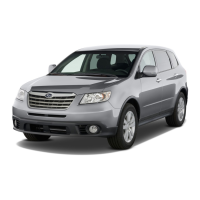
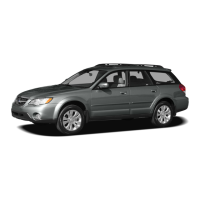
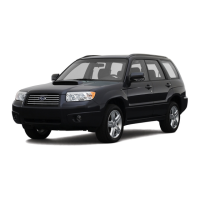
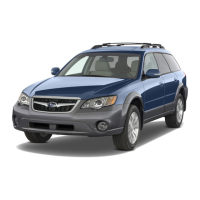



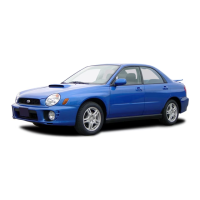

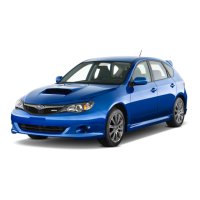

